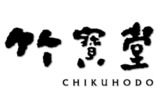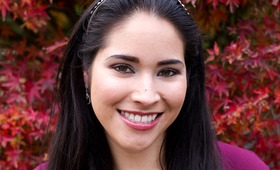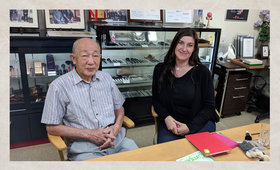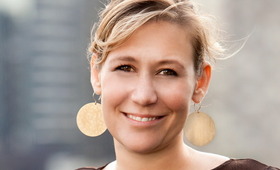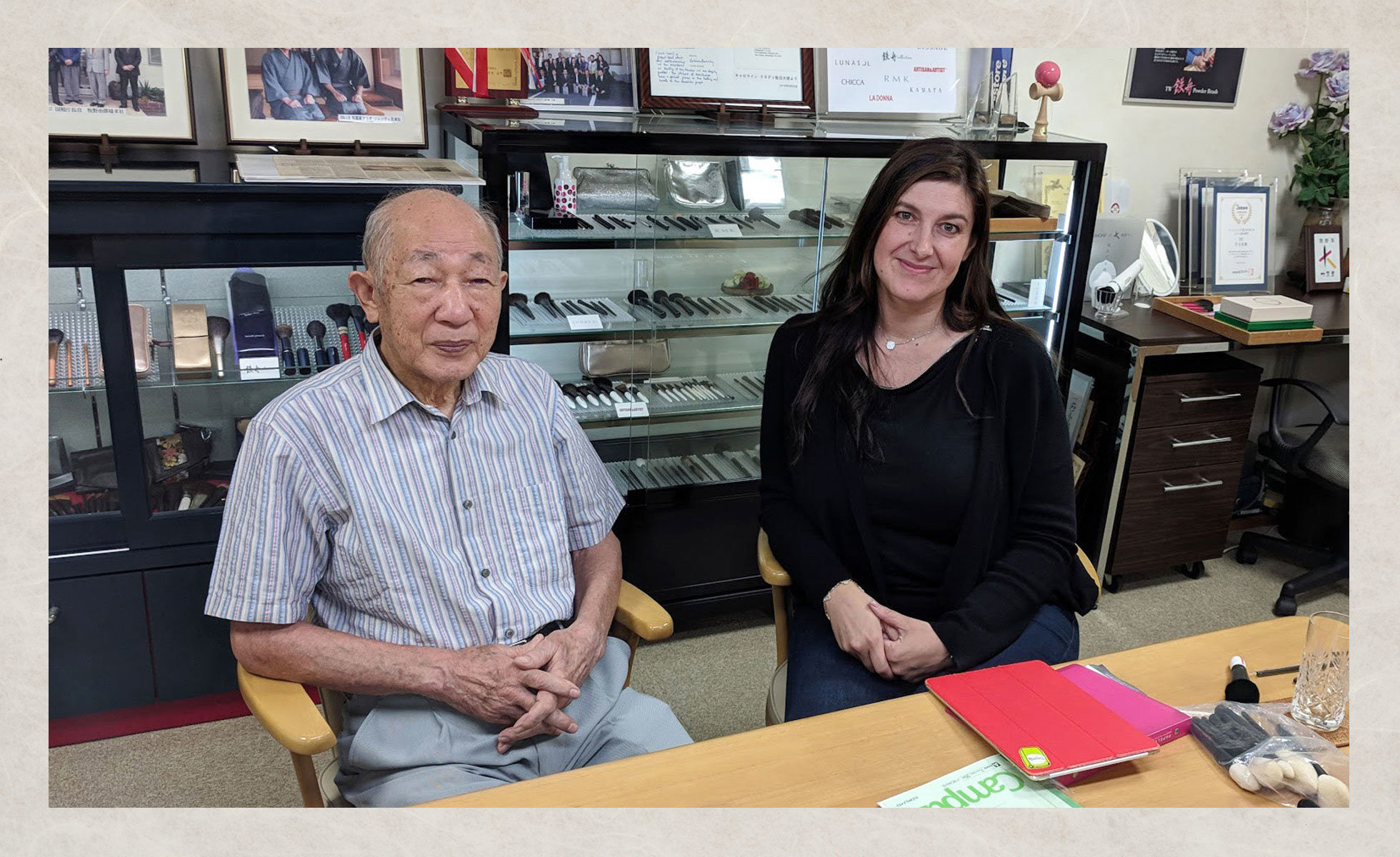
If you are a brush aficionado, you have probably heard the name CHIKUHODO. If not, then you are about to find out how hugely important they are in the world of makeup brushes. My upcoming brush set is a collaboration with this storied manufacturer.
For the craftspeople at CHIKUHODO, every brush has a story. And to understand the weight and depth of their craftsmanship, I want to give you a really condensed history.
The History
CHIKUHODO is a family-owned business based in the Japanese town of Kumano, nestled in the mountains of Hiroshima Prefecture. Beginning around 1870, this traditional village became the center of Japanese fude, or brushes. Originally, Kumano brushes were created for calligraphy, which grew in demand when calligraphy classes became mandatory in Japanese schools. After World War II, Japanese calligraphy was canceled in schools, and the fude business branched out into makeup and painting. Thankfully, in the 1950’s, calligraphy classes started up again in Japan, and the fude industry flourished.
In calligraphy, the tip of the brush is the most important part, and this focus has remained in Kumano craftsmanship, no matter the purpose of the tool.
In the 1950’s Kazuo Takemori was making brushes in the family home, becoming known for making Menso brushes—tools with precise, fine-pointed tips used for painting faces on dolls and other detail work.
In 1971, his son, Tesshyu Takemori, took over, moving the production out of the family home and into a workshop, creating the CHIKUHODO Company, and gradually building up the makeup brush business. In 1997, Tesshyu-san passed on his President and CEO roles in the company to his son, Shin Takemori, whilst remaining Chairman of the company. Tesshyu Takemori is now 92 years old and still active, overseeing the training of a new generation—a vital part of keeping Japanese brushmaking alive. Masao Chioka, CHIKUHODO’s Executive Director, has also been working alongside the “Master Artisan”. And now Shin’s son Yutaro is part of the company, too, as Senior Managing Director.
There are challenges for this venerable business. Like many traditional crafts, brushmaking takes years of training to master. The number of people continuing the craft is in decline. But the Kumano community is coming together to preserve its traditions. In 2018, following in his father’s footsteps, Shin Takemori became President of the Kumanofude Cooperative Brush Maker’s Association—a collective in the area that is focused on keeping this practice alive through education and public engagement.
Tesshyu Takemori says he believes CHIKUHODO is the only brushmaker in Kumano to have three generations of the same family on staff.From great grandfather to great grandson, the continuing legacy of the brand is a bright spot in Kumano’s cultural heritage.

My Journey
Back in Europe, I started my CHIKUHODO collection in 2010, when they were relatively unheard of internationally. It was even more complicated to purchase their brushes at the time. I had to resort to forwarding companies and have them delivered. But then, in 2012, Malin Von Engelhardt Volle, an entrepreneur from Sweden, opened a new webshop called Kohlindo that made it easier to order exclusive products like CHIKUHODO brushes.
Malin and I became friends, and she introduced me to her pen pal from Kumano, Yumie. I visited Yumie and her family the very first time I traveled to Kumano in 2013. In fact, we met just minutes before we went to CHIKUHODO together and clicked instantly. Our hosts at CHIKUHODO thought we had known each other for a long time because we couldn’t stop talking and laughing. My connection with Yumie was immediately very strong, and it truly felt like we belonged to the same family. I could never thank Malin enough for connecting me. Over my many visits to Kumano, I have also had the honor of becoming friends with the Takemori family, owners of the CHIKUHODO Brush company.



Interview
Yutaro Takemori agreed to answer some questions on his family’s long history as brushmakers.
Sonia: Are you able to share where the name “CHIKUHODO” comes from? Was the name chosen by Tesshyu-san?
Yutaro: Honestly, we are not sure of the origin of CHIKUHODO meaning. We heard CHIKUHODO is house name of Takemori family. It was used at least from the age of Kazuo Takemori.
CHIKUHODO is a family business. We imagine you grew up surrounded by brushes and brush makers. Can you remember at what age you completed your first brush and how difficult did you find it?
I made my first brush tip when I was 23 years old. Although I found it to be challenging work, I was simply making a regular brush with an already established method. Since becoming involved in the development of new brushes, I continue to face the challenges of brush-making to this day.
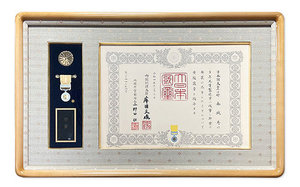 Tesshyu Takemori, your grandfather, was awarded the Yellow Ribbon Medal of Honor by the Japanese government for his remarkable achievements in his profession. Can you tell us a little more as to why he was awarded this medal?
Tesshyu Takemori, your grandfather, was awarded the Yellow Ribbon Medal of Honor by the Japanese government for his remarkable achievements in his profession. Can you tell us a little more as to why he was awarded this medal?
The Medal with Yellow Ribbon is an award given to individuals who have dedicated many years to their work. Along with his experience serving as the president of the Kumanofude Cooperative Brush Maker’s Association, he was nominated and honored with this award.
You are now the fourth generation of your family running and working in what became CHIKUHODO. Do you think your children will also take over at some point? Is it difficult to find new “future” artisans in 2024?
It’s a really difficult question! The brush industry has changed dramatically, especially for the natural hair market. It’s hard to guess our future but I’d like to do my best to keep the fude industry focused on the future.
Tesshyu-san created the modern-day CHIKUHODO to specifically create makeup brushes over 40 years ago. What do you see has changed since then? Are your priorities the same (efficiency/softness/cost/materials)?
Tesshyu often says: ‘Making good quality as low cost as possible’ and ‘Make what our clients request us’. These policies remain unchanged. In addition, we have updated our brush making method to be more efficient. What is required from the cosmetic market is always changing. For example in Japan, very soft squirrel hair brushes had been popular because Japanese cosmetic brands were usually made of very soft and gentle powders. But lately, more textured, creamy products are becoming popular as well as brushes with other natural hair types. Because we maintain an OEM (Original Equipment Manufacturing) business with our clients for so long, we know what they want and can adapt. To make what our clients request of us, we have always had to change our knowhow.
You are part of the team that organizes the yearly Fude Matsuri (Kumano’s Brush Festival) Do you have any memories of this festival when you were younger?
It’s the biggest event of the year in Kumano. I was excited and enjoyed it a lot when I was young. When I was still a child, in elementary school or junior high school, we enjoyed going to the festival with friends. It’s the biggest event in town so we were always excited to go to the Fude Matsuri. On festival days, we received pocket money and enjoyed the food stalls and events together. The Fude Festival is not only for those associated with brushes but also an event for all the people of Kumano Town.
Did you always want to take part in the organization?
The first time I participated in a festival as a member of the organizing team, I joined the youth group of the Fude Association to host a workshop for children. We had the children use brushes to paint their favorite designs on uchiwa (fans), and make small brush keychains.
Now, I have become a father myself. And it is because of Kumano Town that we are able to work in brush making. I want children to enjoy the Brush Festival just as much as I did when I was a child. It’s one of my motivations for joining Fude Matsuri now.
The Fude Matsuri every year brings together many companies who are also competitors to the festival. What is the ambiance? Is it easy to get everyone to work together?
It’s a lively festival, and the many brushes hanging along the shrine’s approach is one of the highlights. It can’t be said to be easy, but everyone collaborates, sometimes sharing opinions, to make the festival a great one.
We often speak of Tesshyu-san as a Master Artisan, what is the official title for people who have reached his level of brush-making craft?
There are several calligraphy brush artisans who are called 伝 統工芸士 (dento ko-gei-shi), kinds of traditional craftsman who are certified officially by The Japan Traditional Craft Promotion Association.
But cosmetic brushmaking is still not certified as a traditional industry from the government. So for Tesshyu, we often use the word 筆司, [or Fudeshi - a person who makes the fude head, the most important part of the brush]. We use this not only with him but also Masao, and even all artisans here. But, thankfully, our customers have started referring to the chairman as a Master Artisan.
Don’t miss out on Sonia’s collaboration with Tesshyu Takemori of CHIKUHODO. Sign up for launch notifications here.
Join us in Sonia’s Fude Corner where brush designer Sonia G. shares stories, expertise, and knowledge about handcrafted Fude. Get tips, techniques, and advice to make the most out of your makeup brushes. Sign up here to get notified about Sonia’s newest articles.
All photos courtesy of Sonia G.




